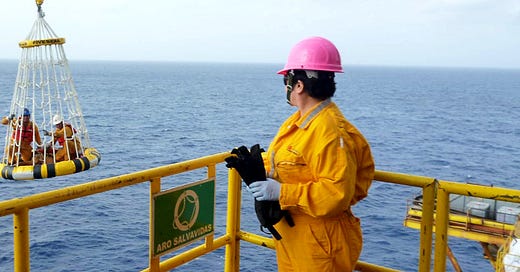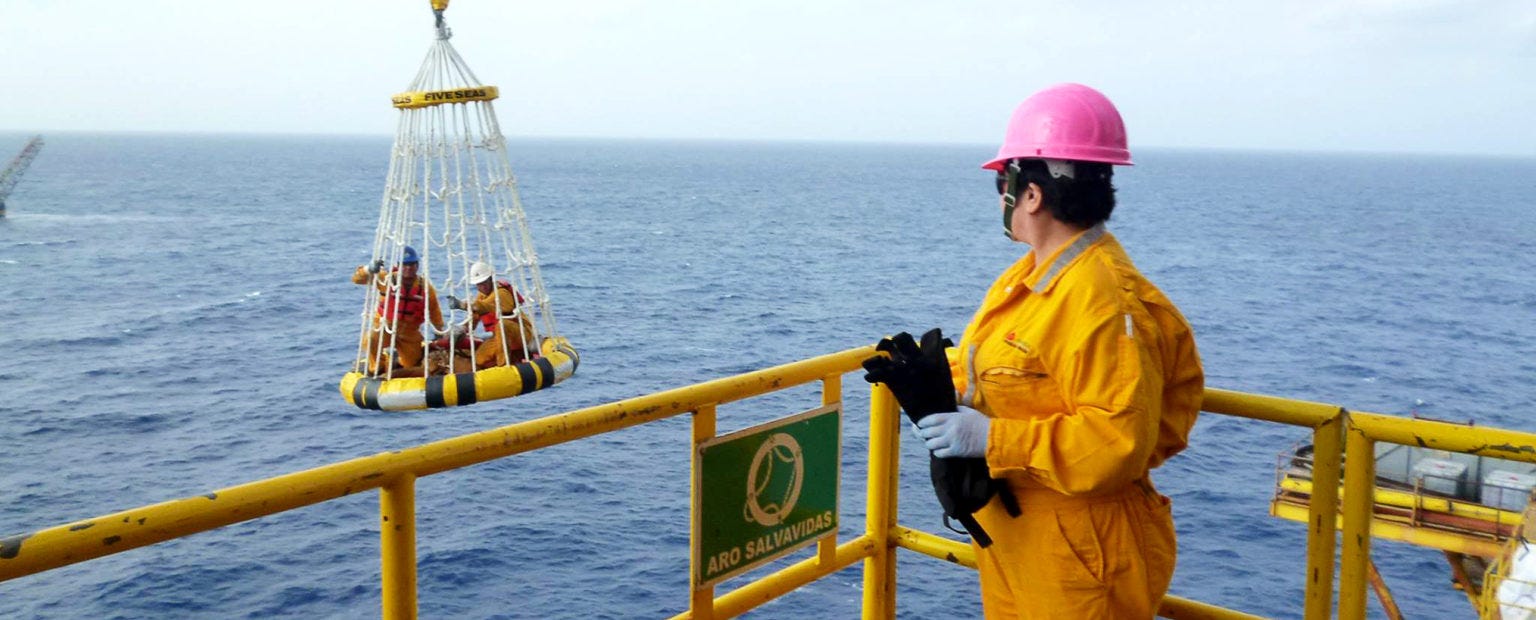The Secret Sisterhood of Offshore Oil Workers
Living on a remote oil platform 60 miles out into the Gulf of Mexico is no easy assignment. Now imagine being one of the first women to ever step on board.
María de Jesús Ramos Cárdenas didn’t know what she was doing when she arrived at the helicopter pad in Ciudad del Carmen, an island city along Mexico’s gulf coast, in September 1988.
She didn’t know much about the offshore oil industry. But she was tired of using her medical degree only haphazardly — giving consults when and where she could, often door-to-door, while also cooking food, sewing clothes, cutting hair, and painting nails in between to pay the bills. Things had been better during the past few months; she was thrilled to have finally gotten a chance to put her degree to use more regularly, working on the island at a hospital run by Pemex, Mexico’s national oil company.
The refrain that Ramos repeated to her supervisors, and indeed the reason she was hired, was “send me wherever you need me.” And now, they had taken her up on it. She was being sent to an oil barge about 60 miles offshore, where sh…
Keep reading with a 7-day free trial
Subscribe to Narratively to keep reading this post and get 7 days of free access to the full post archives.




